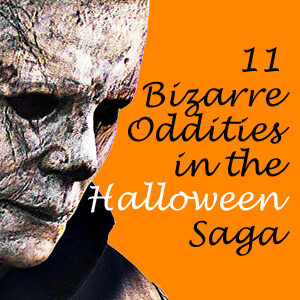At the “Gilmore Girls” panel at the ATX Television Festival in June, producer Amy Sherman-Palladino said that in the TV business, if you’re lucky, “You get one.” Presumably, she meant one show where the actors, writers and environment come together to result in a loved and lauded finished product.
By those standards, she actually got two, with the second being “Bunheads”(2012-13, ABC Family; available for digital download from Amazon). However, if you add “not being canceled after one season” to the requirements, “Bunheads” did indeed lack that extra stroke of luck.
As good as ‘GG,’ but not as lucky
When “Bunheads” was canceled, I embarked on a “Gilmore Girls” rewatch to fill the void. And it didn’t take me long after finishing “Gilmore Girls” to do a “Bunheads” rewatch. It’s impossible to compare a seven-season show to a one-season show, but I can confidently say that my love for “Bunheads” – my No. 4 show of 2012 and No. 1 show of 2013 – is equal to that of “Gilmore Girls.” If given seven seasons, I have no doubt it would’ve likewise become a classic.

“Bunheads” (2012-13)
ABC Family, 18 episodes
Creator: Amy Sherman-Palladino
Stars: Sutton Foster, Kaitlyn Jenkins, Julia Goldani Telles
Chronicling Michelle Simms (Sutton Foster), a 30-something Las Vegas dancer resisting her career shift from performer to teacher, and four teen ballet dancers, “Bunheads” was a more personal show for former dancer Sherman-Palladino than “Gilmore Girls,” which started as a basic studio pitch. But it also owes a huge debt to “Gilmore Girls,” as it copies several tropes: the only-on-TV small town (Paradise, California), the rapid-fire witticisms, the breezy background music of Sam Phillips, and about half the supporting cast.
Sherman-Palladino and her writers – “Gilmore” veterans Daniel Palladino and Sheila R. Lawrence among them – also can’t resist the pop-culture references, although at times they forget these characters aren’t Lorelai and Rory: Would Fanny really make a parallel to Scott Rudin and Johnny Depp? Would Sasha really pepper a “Franny and Zooey” nod into a conversation?
What makes “Bunheads” qualify as Sherman-Palladino’s second case of “You get one” is that she cast five dancers in lead roles and they all turned out to be outstanding actresses who could handle the dialogue-heavy scripts. She basically found another Lorelai and four more Rorys.
If “Bunheads” is more all over the place than “Gilmore Girls,” it’s because it’s a more ambitious show. Michelle, who only has one happy day with new husband Hubbell before he dies in a car accident, lights up the screen every time she smiles, but it’s also clear that life is delivering sledgehammer blows to her lithe frame.
A quartet of friends
The four bunheads seem like real friends, each with a distinct personality as the series begins: Boo (Kaitlyn Jenkins) is the Everygirl, Sasha (Julia Goldani Telles) is the Type A, Ginny (Bailey Buntain during the show, now called Bailey De Young) is put-together and proper, and Melanie (Emma Dumont) is sardonic.

Through 18 episodes, they evolve: Boo gets a steady boyfriend in Carl, Sasha moves into her first apartment, Ginny falls for the inaccessible Frankie, and Melanie finds an outlet for her aggression in the form of roller derby.
The adorable Boo (who faints during a montage of the girls studying up on sex) was my favorite character on the initial airing, but on this viewing I sympathized with Sasha. Over the course of a harrowing move from Florida to South Carolina for a new job, I allowed myself one “Bunheads” episode every night to cheer myself up, and I related to Sasha’s endless to-do list as she rents her first apartment.
“Bunheads” flips the traditional script by making everything from the women’s or girls’ points of view, with the guys as the objects of affection. College pop culture courses speak about the “male gaze” common to most shows, but “Bunheads” unwaveringly comes from the female gaze. In listing characters who appeared in the most episodes, the top nine are females (Kelly Bishop’s ballet teacher Fanny and Stacey Oristano’s dress maker Truly are main characters No. 6 and 7).
The first males listed – at seven episodes each – are four boyfriends: Michelle’s Godot, Boo’s Carl, Sasha’s Roman and Melanie’s Dez. The Melanie-Dez thing is defined by only one scene in the 17th episode, when the supposed meathead says something touching about his former pet dog and Melanie begins to thaw toward him; still, it’s the unfinished storyline I miss most.
Magic realism in character form
While “Bunheads” uses templates early on – particularly Charlie, Melanie’s attractive brother with no personality who Boo and Ginny alternately crush on – it strikes gold with the introduction of Frankie (Niko Pepaj) and Cozette (Jeanine Mason) in episode 12.
These new-in-town siblings are examples of magic realism in character form: Cozette speaks three languages, Frankie is a world-class sketch artist who destroys all his drawings, they somehow change outfits three times a day, they work as DJs for the roller derby team, and they get along with everyone. Cozette has a picnic with Paradise High’s resident stud, Mitch Alvarado (who goes unseen, like Kramer’s pal Bob Sacamano on “Seinfeld”), in her first week of school, and Frankie makes a puddle out of Ginny despite barely saying a word to her.
While an observant “Gilmore Girls” fan would notice Sherman-Palladino’s interest in whimsy (from “A Film By Kirk” to the way Stars Hollow traditions push the boundaries of logic, like the annual dance marathon), “Bunheads” embraces detailed dreams and stylized dance numbers that illustrate a character’s emotions. Pepper in townsfolk who are very much borrowed from “Gilmore Girls” – Sean Gunn’s Bash is not far removed from Kirk, and Biff Yeager’s Carpenter Bob is the same person as Carpenter Tom – and the formula clicks.
An early powerful dance number comes in episode six when Sasha – who feels abandoned by her separated parents and confused by the role of ballet in her life (she later has a fling as a cheerleader) – dances to They Might Be Giants’ frenetic “Instanbul (Not Constantinople).” It’s not explicitly stated, but I think the dance numbers that aren’t part of the plot are character sketches rather than literal dances from Fanny’s or Michelle’s classes. Thematically, they usually work, and they are always interesting.
The last dance
In fact, the last great dance number from “Bunheads” came six months after the final episode aired. Sherman-Palladino brought together whoever was available (Sasha, Ginny, Cozette and Matisse made it) to dance to Elton John’s “Blues for Baby and Me” in a warehouse.
The camera pans to show Sherman-Palladino from behind in a reverse of how the opening credits show Michelle smiling at the bunheads. It is impossible not to cry, and I like to think this dance is as much a part of the “Bunheads” world as anything from the series proper.
While “Gilmore Girls” racked up more Kleenex-worth moments, “Bunheads” is the more artistically beautiful show. Choreographer Marguerite Pomerhn Derricks’ dance numbers are fascinating even without context, but they gain substantial power by being part of a smartly written TV show. As such, while you don’t have to like ballet to like “Bunheads,” I challenge anyone to make a case that “Bunheads” isn’t the best show about ballet ever made.
In what turned out to be the final episode, Ginny tells Michelle she had sex with Frankie but hadn’t heard from him in a week. The writers – launching a Season 2 thread — probably wouldn’t have gone there if they knew the show would be canceled.
Still, when the crying Ginny says “He was just so beautiful,” it sums up “Bunheads.” It didn’t have time to define every detail of its world – and indeed, Frankie and Cozette remain as ephemerally perfect as when we first met them – but the journey, although truncated and sometimes bumpy, sure was beautiful to watch.
Click here to visit our “Gilmore Girls” and “Bunheads” Zone.

